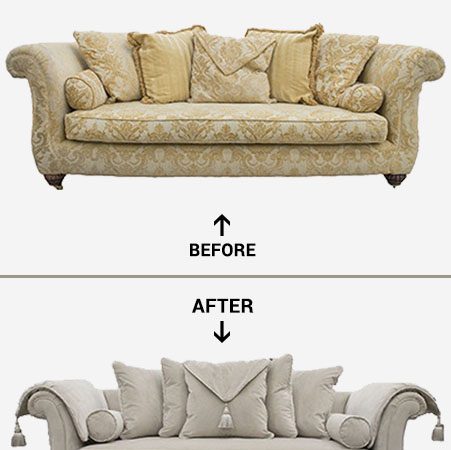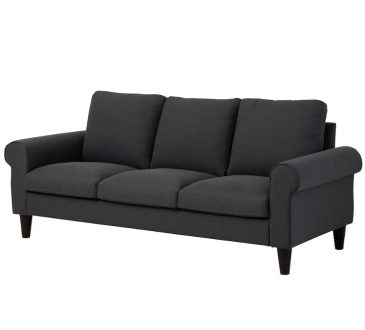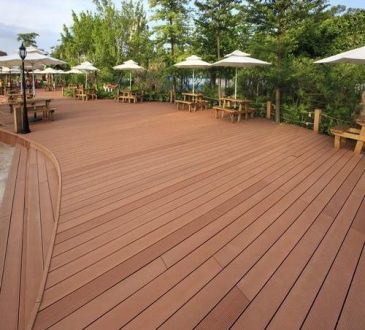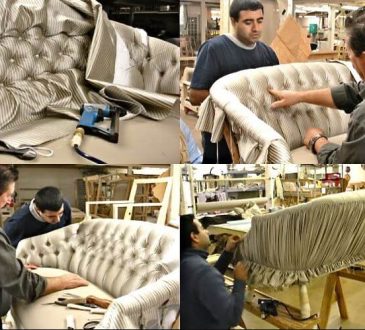
In today’s world, sustainability is more than a buzzword—it’s a lifestyle. From reducing plastic use to embracing energy-efficient solutions, people are looking for ways to minimize their environmental footprint. One area where eco-conscious choices make a significant impact is home furniture, especially sofas. Instead of discarding worn-out sofas and contributing to landfill waste, eco-friendly sofa repair offers a practical and sustainable solution. In this post, we’ll explore why restoring your sofa is better than replacing it, the benefits of eco-friendly repairs, and practical ways to give your old furniture a new lease on life.
Why Choosing Sofa Repair Over Replacement Matters
Sofas are more than just functional furniture—they’re a part of our daily lives. However, over time, cushions sag, frames weaken, and upholstery tears. While replacing a sofa may seem convenient, it has hidden environmental costs.
Landfill waste: Discarded furniture often ends up in landfills, where it can take decades to decompose.
Resource consumption: Manufacturing new sofas requires raw materials like wood, metal, and synthetic fabrics, consuming energy and water.
Carbon footprint: Transporting new furniture adds to greenhouse gas emissions.
By opting for repair and restoration, you reduce waste, save resources, and contribute to a greener environment.
Benefits of Eco-Friendly Sofa Repair
Restoring your sofa has more than just environmental advantages. It also offers practical and financial benefits:
Cost Savings
Professional sofa repair is often cheaper than buying a brand-new piece. Replacing worn cushions, fixing the frame, or reupholstering can significantly extend your sofa’s lifespan at a fraction of the cost.
Customization Opportunities
Repairing your sofa allows you to refresh its style without compromising its original charm. You can choose eco-friendly fabrics, update colors, or even change textures to match your evolving home decor.
Enhanced Comfort
Old cushions can be replaced with high-quality, sustainable materials that improve comfort and support. This is especially valuable for sofas that are structurally sound but need a cushion or padding upgrade.
Preservation of Sentimental Value
Many families have sofas that hold memories. Repairing rather than replacing helps preserve these emotional connections.
Common Eco-Friendly Sofa Repair Techniques
Several repair techniques prioritize sustainability without compromising quality. Here are the most popular methods:
Reupholstery with Sustainable Fabrics
Instead of replacing your sofa, consider reupholstering it with eco-friendly fabrics. Options like organic cotton, linen, hemp, and recycled polyester reduce environmental impact. A new cover can completely transform your sofa’s appearance while keeping the frame intact.
Cushion Refilling
Sagging cushions are one of the main reasons sofas look worn out. Instead of buying new cushions, ask a professional to refill or replace the foam with eco-conscious alternatives like recycled foam or natural latex. This restores comfort and durability.
Frame Repairs
A sturdy frame can last decades if properly maintained. Loose joints, squeaky frames, or broken springs can be repaired rather than replaced. This approach saves wood and metal resources while giving your sofa a solid foundation.
Minor Upholstery Fixes
Small tears, scratches, or worn-out corners don’t always require full replacement. Patch repairs, stitching, or fabric adhesives can effectively extend your sofa’s life with minimal waste.
Leather and Faux Leather Care
Leather sofas can be rejuvenated with eco-friendly conditioners and repair kits. Even synthetic leather can be restored using sustainable products that avoid harsh chemicals. Proper maintenance prevents premature disposal.
How to Choose an Eco-Friendly Sofa Repair Service
Not all sofa repair services prioritize sustainability. To ensure your restoration is truly eco-friendly, consider the following:
Material sourcing: Ask if they use recycled, organic, or sustainable fabrics and fillers.
Waste management: Check if they recycle old foam, fabric, or wood rather than discarding it.
Skill and experience: Choose technicians who specialize in restoration to ensure longevity and minimize the need for future replacements.
DIY Eco-Friendly Sofa Tips
For minor repairs, homeowners can adopt sustainable practices themselves:
Patch small tears with fabric scraps instead of replacing entire panels.
Clean and condition leather with natural products like beeswax or coconut oil.
Tighten screws and joints using basic tools to stabilize the frame.
Use eco-friendly adhesives or threads for minor stitching.
These simple steps can extend your sofa’s life while keeping your environmental impact low.
Final Thoughts
Eco-friendly sofa repair Dubai is more than just a trend—it’s a responsible choice that saves money, preserves cherished furniture, and helps the environment. From reupholstering with sustainable fabrics to refilling cushions and repairing frames, there are countless ways to breathe new life into your sofa without contributing to waste.
By choosing restoration over replacement, you embrace a sustainable lifestyle and enjoy the comfort, style, and sentimental value of your existing furniture. The next time your sofa shows signs of wear, remember: restoration is the smarter, greener, and more satisfying option.




